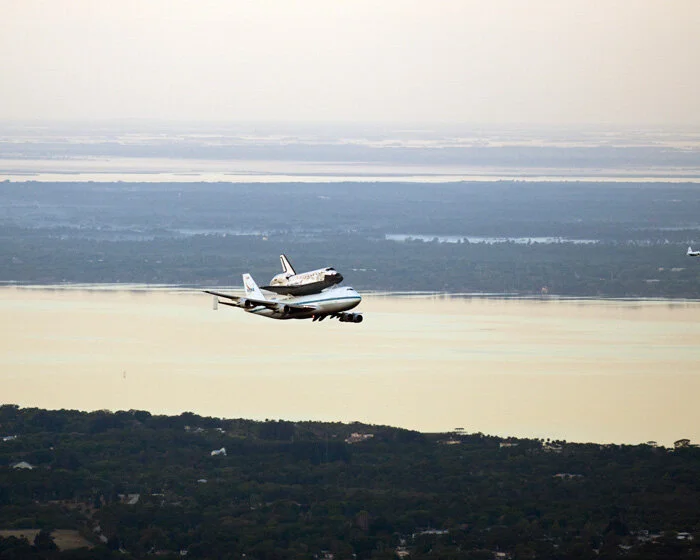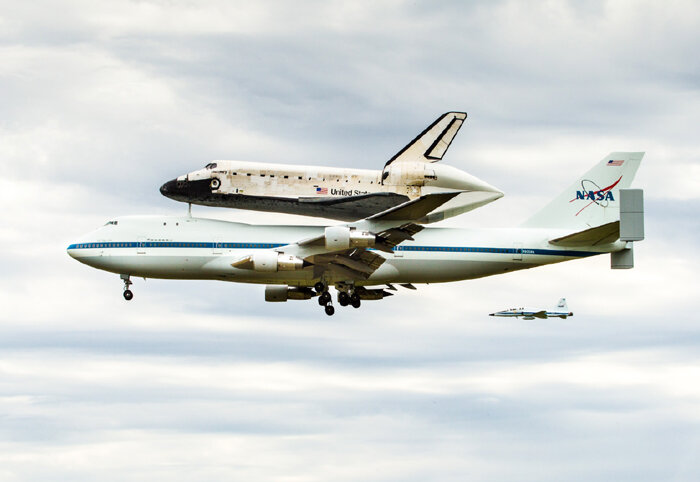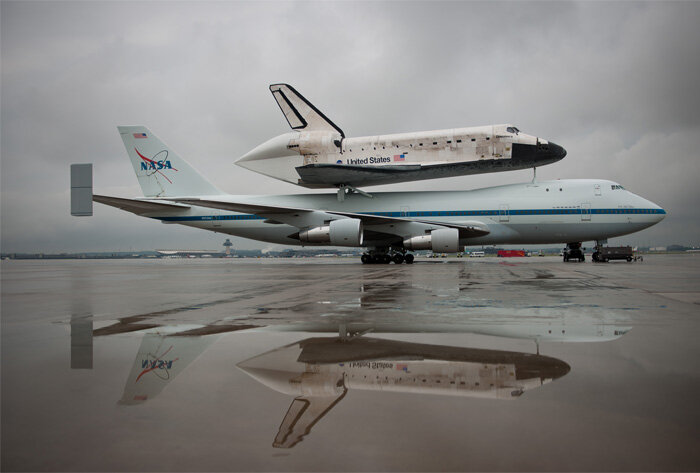A MIGHTY, MIGHTY MACHINE
Photo: Richard Mallory Allnutt
All of our stories here at Vintage News relate to our goal to tell the history of aviation, specifically a Canadian take on the subject. Often they are stories of our heroes from the Second World War, their aircraft, their culture or their memories. More often than not we are looking back, way back. Sometimes though, while researching a story that reaches back in time, history is being made in the skies at the very moment our gaze is turned to distant decades. It is then that we should put down our research tools, and look up into the sky to see something with our living eyes that one day will be the source of research fever in the decades to come.
This week, while delving deep into the esoteric world of Second World War dummy aircraft and decoy airfields, I received an e-mail from Vintage Wings photographer Richard Allnutt with beautiful photos of an event I knew was transpiring in real time, but had ignored as I focused on 1942. Allnutt had crossed the Potomac River to Washington's Dulles airport to watch as Space Shuttle Discovery (OV-103) made one last eye-popping and glorious flight aboard NASA's gleaming and massive 747 Shuttle Carrier Aircraft (SCA) from the Shuttle Landing Facility at NASA’s Kennedy Space Center in Florida up the length of the East Coast of America to Dulles Airport in Washington. Once over DC, the SCA lofted Discovery on her back round the Capitol and the region, allowing her to bask in the admiring gazes of hundreds of thousands of Washingtonians. The pilots and former Discovery crew aboard the SCA were reluctant, no doubt, to bring her to her final full stop. Discovery contrasted with the highly polished 747 mother ship in that she wore a glorious patina of grime, grease and repair from 28 years of hard delivery work encompassing 39 missions to space and a magical 365 days total time in space.
Allnutt sent us a lovely collection of images from his vantage point on the lawns of Dulles and we combined them with some of NASA's own images taken from her accompanying T-28 Talons and from other NASA contract photographers. What follows are some pretty spectacular images of one of the finest air and space craft to ever grace American skies as she makes her exit off stage.
It was only natural that we ask one of our pilots, Chris Hadfield, for his perspective on Discovery's final voyage and the notion that her remaining stable mates will also end their careers to be dispersed to Museums. Hadfield, one of Canada's premier astronauts has crewed two shuttle mission aboard Discovery's sisters Endeavour and Atlantis and will shortly be launched in a Soyus capsule to the International Space Station to become the first Canadian to command the ISS. Chris, in a poignant, firsthand and fond look back, had this to say:
“All aviators feel wistful when one of their flying machines is retired. It's a visible grounding of windswept dreams. At the same time, though, it is a triumph. This machine, that so often carried our hopes and people aloft, was a survivor! It made it through every mission, avoided the disasters and foibles that claimed some of its siblings, and safely landed cargo and crew back to Earth, every time. It's wonderful that Discovery, after thousands of times around the world, is now securely and proudly on display for all to see and contemplate, and to fit into our history of skyward exploration; a place of honour for a mighty, mighty machine.”
With nothing more to say, let’s take a look at the last sweeping circuits made by Discovery and the SCA on April 17th, 2012
On the evening of April 16th, at the Shuttle Landing Facility at NASA’s Kennedy Space Center in Florida, the Shuttle Carrier Aircraft with space shuttle Discovery secured to its back is parked on the tarmac awaiting departure from Kennedy tomorrow morning. Photo: NASA/Tim Jacobs
The Shuttle Carrier Aircraft transporting space shuttle Discovery to its new home prepares to take off from the Shuttle Landing Facility at NASA’s Kennedy Space Center in Florida in the early morning darkness in Florida. Photo: NASA/Jim Grossmann
The Shuttle Carrier Aircraft transporting space shuttle Discovery to its new home takes off from the Shuttle Landing Facility at NASA’s Kennedy Space Center in Florida at about 7 a.m. EDT, April 17th, 2012. In the background is the 525-foot-tall Vehicle Assembly Building and NASA’s new mobile launcher. The aircraft, known as an SCA, is a Boeing 747 which was modified by NASA to transport the shuttles between destinations on Earth. This SCA, designated NASA 905, is assigned to the remaining ferry missions, delivering the shuttles to their permanent public display sites. Photo: NASA/Glenn Benson
Related Stories
Click on image
The Shuttle Carrier Aircraft transporting space shuttle Discovery is seen heading south to fly over Brevard County’s beach communities for residents to get a look at the shuttle before it leaves the Space Coast for the last time. Photo credit: (NASA/Glenn Benson)
Having come up the coast in the early morning the SCA and Discovery overfly the Potomac River bound for a fly past of the Capitol.
Space shuttle Discovery and the SCA fly near the U.S. Capitol while workers atop the dome look on. Discovery, the first orbiter retired from NASA’s shuttle fleet, completed 39 missions, spent 365 days in space, orbited the Earth 5,830 times, and traveled 148,221,675 miles. Photo: NASA/Smithsonian Institution/Harold Dorwin
Discovery flew low over the suburbs of Washington giving the ordinary citizen a chance to see history in the making. The NASA T-38 Talon training aircraft accompanying Discovery carried a NASA photographer to record the moment for history. Photo Credit: (NASA/Robert Markowitz)
NASA had photographers on the ground as well as in the air. Once on the ground, NASA will transfer Discovery to the National Air and Space Museum to begin its new mission to commemorate past achievements in space and to educate and inspire future generations of explorers. Photo: NASA/Rebecca Roth
On the ground at Dulles where Discovery was scheduled to land, Vintage Wings photographer Allnutt captures the growing crowd. Photo: Richard Mallory Allnutt
Discovery, looking rough and work worn rest on the outstretched arms of her SCA angel as the pair make a low level pass over the crowd. Photo: Richard Mallory Allnutt
From beneath the SCA, Discovery is barely visible, looking more like a flap mod. Photo: Richard Mallory Allnutt
Hanging low over the airfield, the SCA/Shuttle combo displays a one-of-a-kind stern profile. Photo: Richard Mallory Allnutt
On final and reluctantly ready to end her flying career. The space shuttle itself is set an angle of attack that allows it to fly and take the weight from the back of the SCA. Only when taking off or solidly on the ground does the shuttle's weight come down on the back of the carrier. A NASA chase plane follows with a photographer. Like a mud spattered Jeep or a dirt-encrusted dump truck, Discovery wears her grunge patina with pride and indeed, that is the way the National Air and Space Museum requested her. Photo: Richard Mallory Allnutt
Just seconds from the end of her career, space shuttle Discovery, mounted atop a NASA 747 Shuttle Carrier Aircraft (SCA) approaches the runway at Washington Dulles International Airport, Tuesday, April 17, 2012, Photo: NASA/Paul E. Alers
Space shuttle Discovery, mounted atop a NASA 747 Shuttle Carrier Aircraft (SCA) taxis past the terminal at Washington Dulles International Airport in Sterling, Virginia. Photo: NASA/Sean Smith
A NASA T-38 with photographer Robert Markowitz in the back, is dirtied up and ready to touch down at Dulles. Photo: Richard Mallory Allnutt
NASA Deputy Administrator Lori Garver, fourth from right, stands with the crew of 747 Shuttle Carrier Aircraft (SCA) along with other officials from the Smithsonian Institution, along with Sen. Patrick Leahy of Vermont, fourth from left, in front of Space Shuttle Discovery following its landing at Washington Dulles International Airport. Photo: NASA/Smithsonian Institution/Mark Avino
The faces of the ordinary Americans on the ground tell the whole story of the achievement that was the Shuttle Program. A young woman and her daughter are awed and delighted by the site of Space shuttle Discovery flying over NASA’s Goddard Space Flight Center in Greenbelt, Maryland during its final voyage to the Smithsonian’s Steven F. Udvar-Hazy Center in Chantilly, Virginia The flight path included Goddard as a nod to the many support and communications specialists working with the Shuttle program here at Goddard during Discovery’s 39 missions. Photo: NASA/GSFC/Virginia Robinson
Space shuttle Discovery, mounted atop a NASA 747 Shuttle Carrier Aircraft (SCA) is seen a few hours before being demated at Washington Dulles International Airport, Wednesday, April 18, 2012, in Sterling, VA. Discovery, the first orbiter retired from NASA’s shuttle fleet, completed 39 missions, spent 365 days in space, orbited the Earth 5,830 times, and traveled 148,221,675 miles. NASA will transfer Discovery to the National Air and Space Museum to begin its new mission to commemorate past achievements in space and to educate and inspire future generations of explorers. Photo: NASA/Bill Ingalls


























